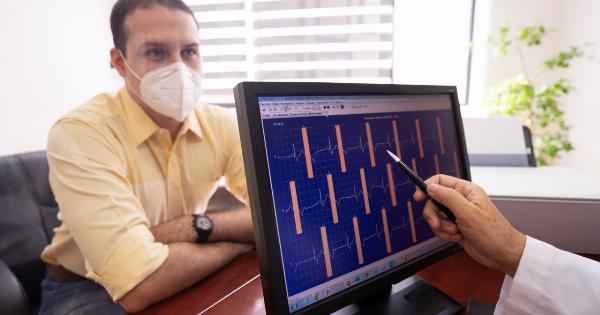When it comes to reproductive health, sperm plays a crucial role in fertilization and successful conception. Understanding the normal parameters and meaning of sperm can provide valuable insights into male reproductive health and overall wellbeing.
What is Sperm?
Sperm, often referred to as spermatozoa, are male reproductive cells that are essential for sexual reproduction. Produced in the testes of males, sperm cells are tiny and have a distinctive structure consisting of a head, midsection, and tail.
The head contains the genetic material required for fertilization, while the tail aids in sperm movement.
Normal Parameters of Sperm
Various factors are taken into consideration while evaluating sperm health. Here are some common parameters used to assess sperm quality:.
Sperm Count
Sperm count refers to the number of sperm cells present in a given semen sample. A healthy sperm count is typically considered to be 15 million or more sperm cells per milliliter. Lower sperm counts may indicate fertility issues.
Motility
Sperm motility refers to the ability of sperm cells to swim and move effectively. It is assessed by examining the percentage of active, moving sperm cells in a semen sample. Ideally, at least 40% of sperm should exhibit progressive motility.
Morphology
Sperm morphology refers to the size and shape of sperm cells. Normal sperm cells have a distinct oval head and a long, straight tail.
Evaluating sperm morphology helps determine whether abnormalities exist within the sperm structure, which can affect fertility.
Viability
Sperm viability refers to the percentage of live sperm cells in a semen sample. A high viability rate indicates healthy sperm cells with greater chances of fertilization.
Volume
Semen volume refers to the total amount of fluid ejaculated during ejaculation. Normal semen volume ranges between 1.5 to 5 milliliters. Low semen volume may indicate issues such as obstruction or hormonal imbalances.
pH Level
The pH level of semen, which indicates its acidity or alkalinity, can affect sperm health. A pH level between 7.2 and 7.8 is considered normal, as acidic or alkaline conditions outside this range can harm sperm cells.
The Meaning Behind Sperm Parameters
Understanding the meaning behind sperm parameters can help indicate underlying health issues or potential fertility problems. Here are some insights into what abnormal sperm parameters may signify:.
Low Sperm Count
A low sperm count, also known as oligospermia, can reduce the chances of successful conception.
It may result from various factors such as hormonal imbalances, testicular issues, genetic abnormalities, or lifestyle factors like smoking, excessive alcohol consumption, or drug use.
Poor Sperm Motility
Poor sperm motility can impede sperm cells’ ability to reach and fertilize the egg. It can arise from genetic factors, infections, hormonal imbalances, or lifestyle choices such as obesity, stress, or exposure to environmental toxins.
Abnormal Sperm Morphology
Abnormal sperm morphology, known as teratozoospermia, can hinder fertilization. It can be caused by genetic defects, hormonal imbalances, testicular issues, or exposure to environmental factors like radiation or pesticides.
Reduced Sperm Viability
Reduced sperm viability can decrease the chances of successful fertilization. Factors such as infections, exposure to excessive heat, smoking, or certain medications can affect sperm viability.
Anomalous Semen Volume
Anomalous semen volume can be indicative of underlying health conditions or obstruction. Hormonal imbalances, inflammation, blockages, or certain medications can lead to abnormal semen volume.
Altered pH Levels
Altered pH levels can affect sperm health and survival. Acidic or alkaline conditions outside the normal range can be a sign of infection, inflammation, prostate issues, or ejaculatory duct obstruction.
Improving Sperm Health
While abnormal sperm parameters can be concerning, several lifestyle changes can help improve sperm health:.
Healthy Diet
Eating a balanced diet rich in fruits, vegetables, lean proteins, and whole grains provides essential nutrients for sperm production and overall reproductive health.
Regular Exercise
Maintaining an active lifestyle promotes healthy sperm production and improves overall wellbeing. Engaging in moderate-intensity exercises like brisk walking, swimming, or cycling can enhance sperm quality.
Avoiding Harmful Substances
Refraining from smoking, excessive alcohol consumption, and drug use can significantly improve sperm health. These substances can negatively impact sperm count, motility, and morphology.
Stress Management
Managing stress levels through relaxation techniques like yoga, meditation, or counseling can enhance hormonal balance and promote healthier sperm.
Adequate Sleep
Getting enough quality sleep is crucial for maintaining optimal reproductive health. Lack of sleep can disrupt hormone production and affect sperm quality.
Protection against Heat
Avoiding prolonged exposure to high temperatures, such as hot tubs or saunas, can prevent damage to sperm cells. It is also advisable to wear loose-fitting underwear to allow for proper airflow.
Regular Check-ups
Regular visits to a healthcare professional for reproductive health check-ups can help monitor sperm parameters and address any underlying issues promptly.
Conclusion
Sperm health is intricately linked to reproductive health and overall wellbeing. Understanding the normal parameters of sperm and their meaning can shed light on potential fertility issues or underlying health conditions.
By making certain lifestyle changes and seeking appropriate medical guidance, individuals can take proactive steps to improve sperm health and promote their chances of successful conception.






























